Human primary liver cancer-derived organoid cultures for disease modeling and drug screening
- PMID: 29131160
- PMCID: PMC5722201
- DOI: 10.1038/nm.4438
Human primary liver cancer-derived organoid cultures for disease modeling and drug screening
Abstract
Human liver cancer research currently lacks in vitro models that can faithfully recapitulate the pathophysiology of the original tumor. We recently described a novel, near-physiological organoid culture system, wherein primary human healthy liver cells form long-term expanding organoids that retain liver tissue function and genetic stability. Here we extend this culture system to the propagation of primary liver cancer (PLC) organoids from three of the most common PLC subtypes: hepatocellular carcinoma (HCC), cholangiocarcinoma (CC) and combined HCC/CC (CHC) tumors. PLC-derived organoid cultures preserve the histological architecture, gene expression and genomic landscape of the original tumor, allowing for discrimination between different tumor tissues and subtypes, even after long-term expansion in culture in the same medium conditions. Xenograft studies demonstrate that the tumorogenic potential, histological features and metastatic properties of PLC-derived organoids are preserved in vivo. PLC-derived organoids are amenable for biomarker identification and drug-screening testing and led to the identification of the ERK inhibitor SCH772984 as a potential therapeutic agent for primary liver cancer. We thus demonstrate the wide-ranging biomedical utilities of PLC-derived organoid models in furthering the understanding of liver cancer biology and in developing personalized-medicine approaches for the disease.
Conflict of interest statement
The authors declare no competing financial interests.
Figures
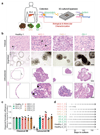
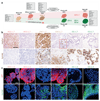
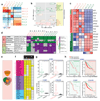
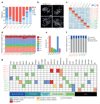

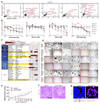
Comment in
-
Tumoroid à la carte: Path for personalization.Hepatology. 2018 Sep;68(3):1189-1191. doi: 10.1002/hep.29846. Epub 2018 May 14. Hepatology. 2018. PMID: 29457835 No abstract available.
-
Organoid Models of Cancer Explode with Possibilities.Cell Stem Cell. 2018 Mar 1;22(3):290-291. doi: 10.1016/j.stem.2018.02.010. Cell Stem Cell. 2018. PMID: 29499146
References
-
- Bosch FX, Ribes J, Díaz M, Cléries R. Primary liver cancer: Worldwide incidence and trends. Gastroenterology. 2004;127:S5–S16. - PubMed
-
- Bridgewater J et al. Guidelines for the diagnosis and management of intrahepatic cholangiocarcinoma. Journal of Hepatology. 2014;60:1268–1289. - PubMed
-
- Hirohashi S, et al. Tumours of the Liver and Intrahepatic Bile Ducts. In: Stanley R, Hamilton MD, Lauri A, Aaltonen MD PhD, editors. World Health Organization Classification of Tumours. IARCPress; 69372 Lyon France: 2000.
-
- Lee SD, et al. Clinicopathological features and prognosis of combined hepatocellular carcinoma and cholangiocarcinoma after surgery. Hepatobiliary Pancreat Dis Int. 2014;13:594–601. - PubMed
-
- International Consensus Group for Hepatocellular, N Pathologic diagnosis of early hepatocellular carcinoma: A report of the international consensus group for hepatocellular neoplasia. Hepatology. 2009;49:658–664. - PubMed
MeSH terms
Substances
Grants and funding
LinkOut - more resources
Full Text Sources
Other Literature Sources
Medical
Molecular Biology Databases
Miscellaneous

